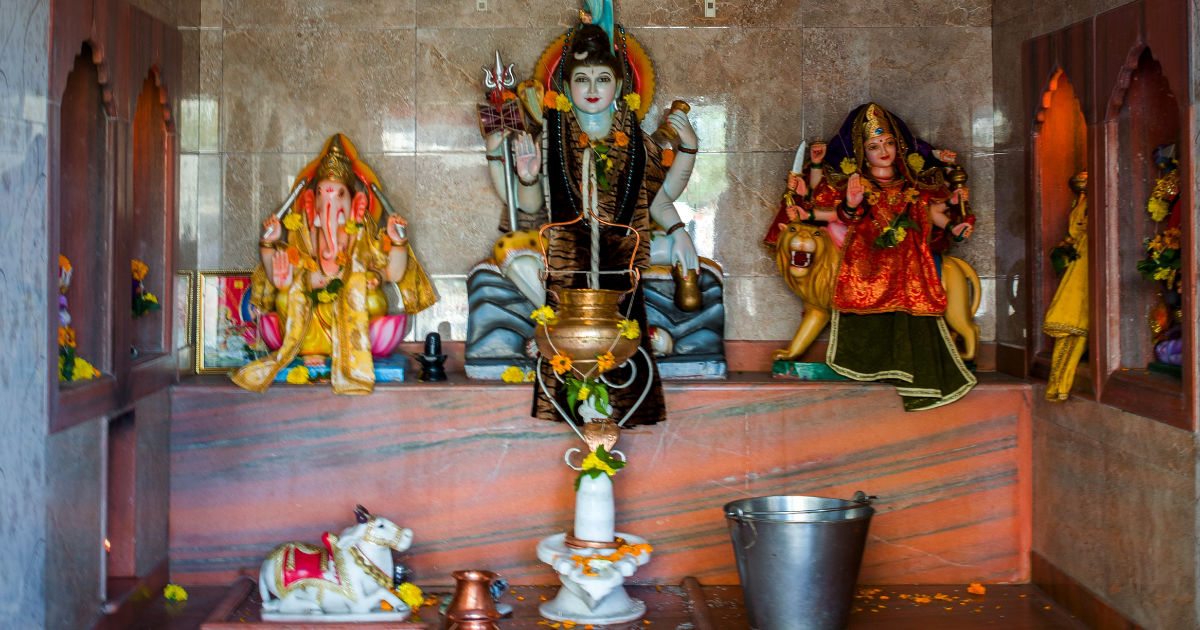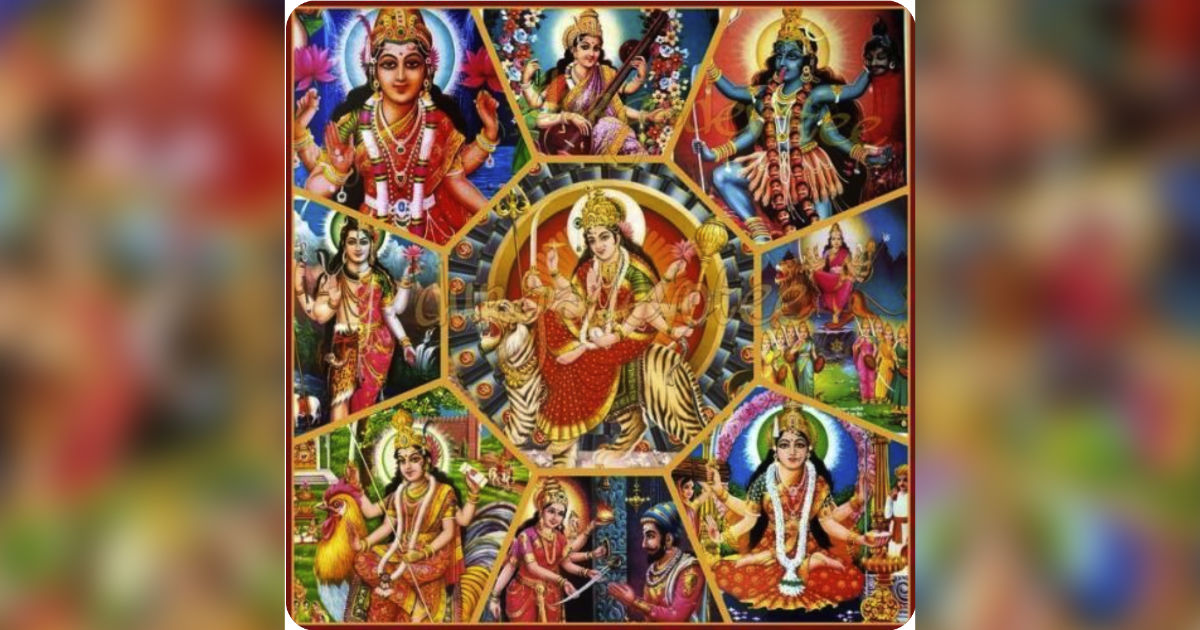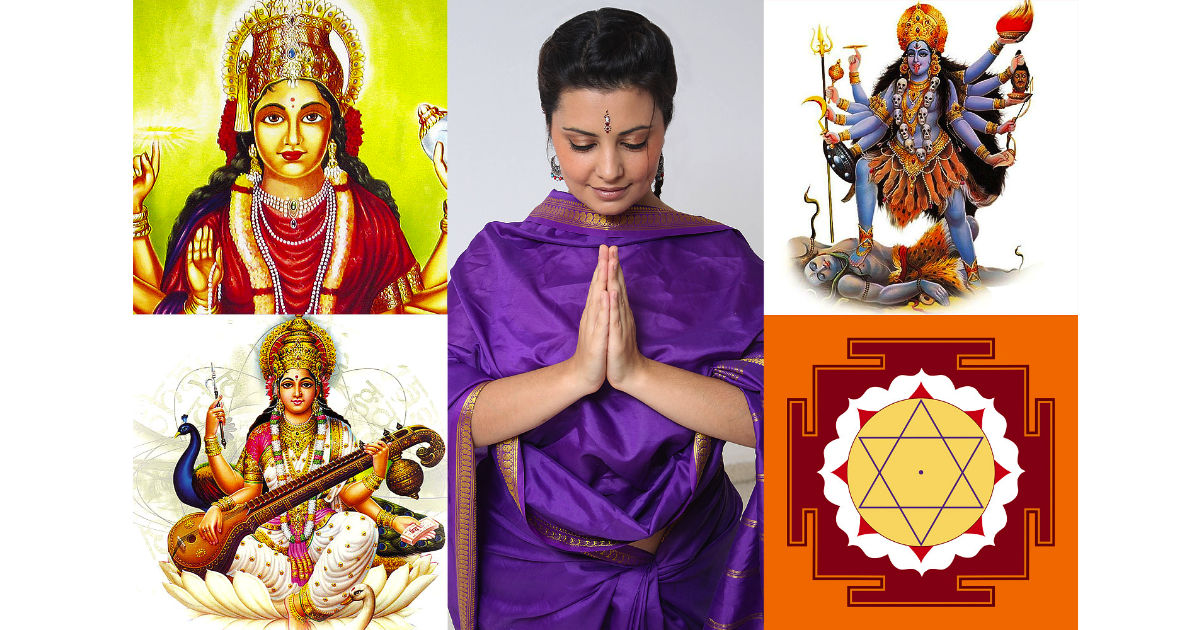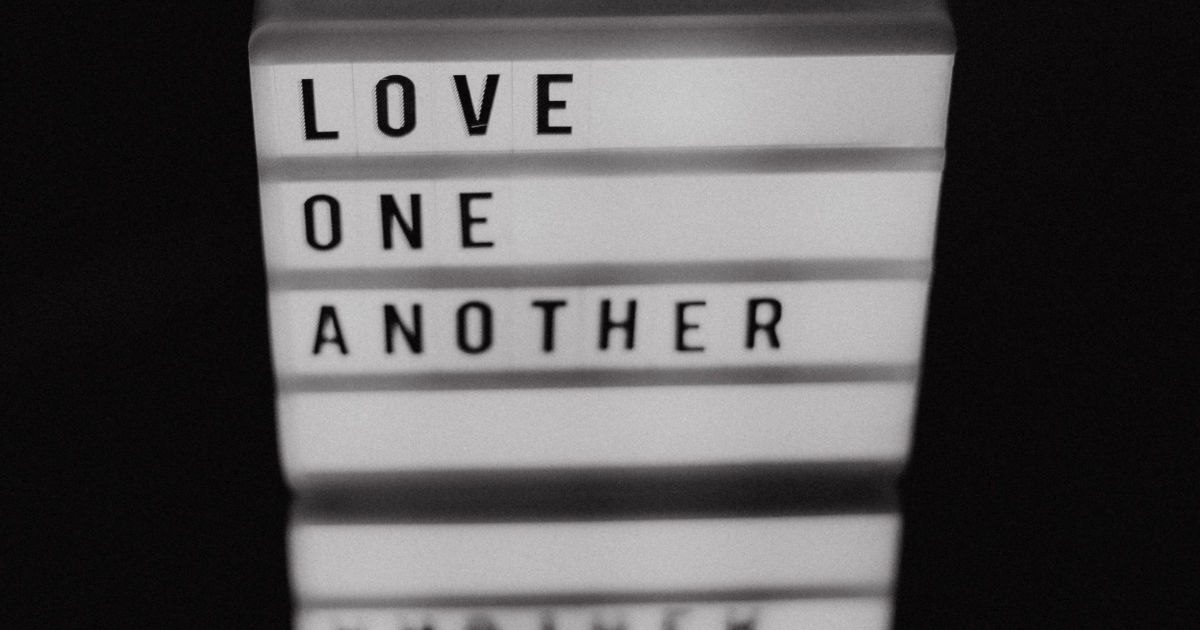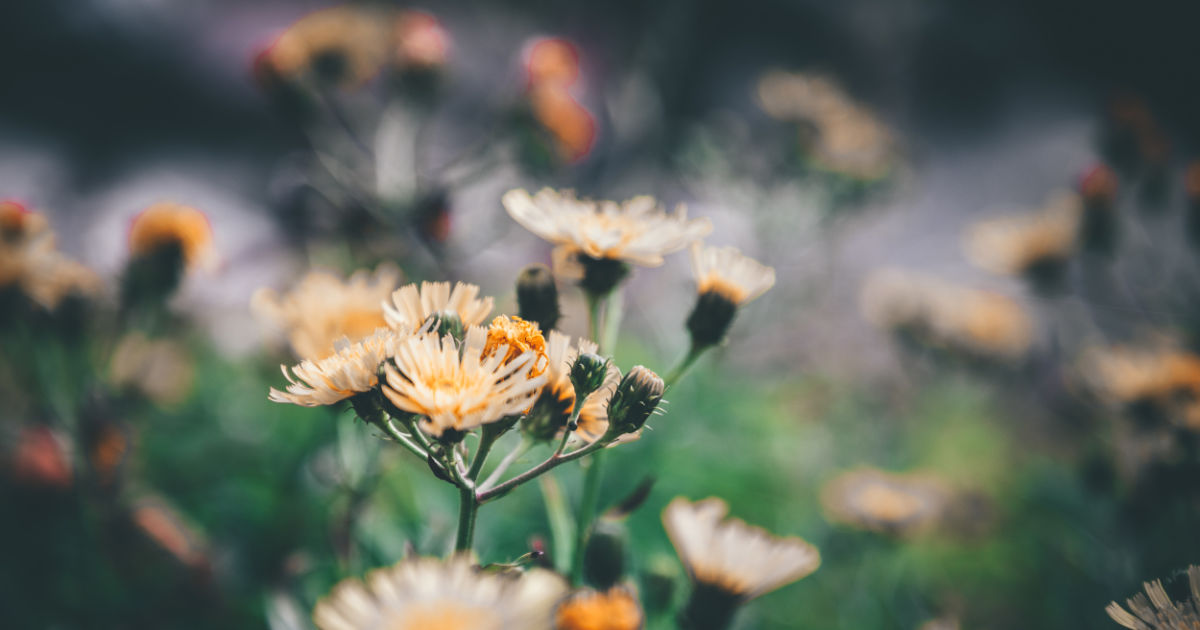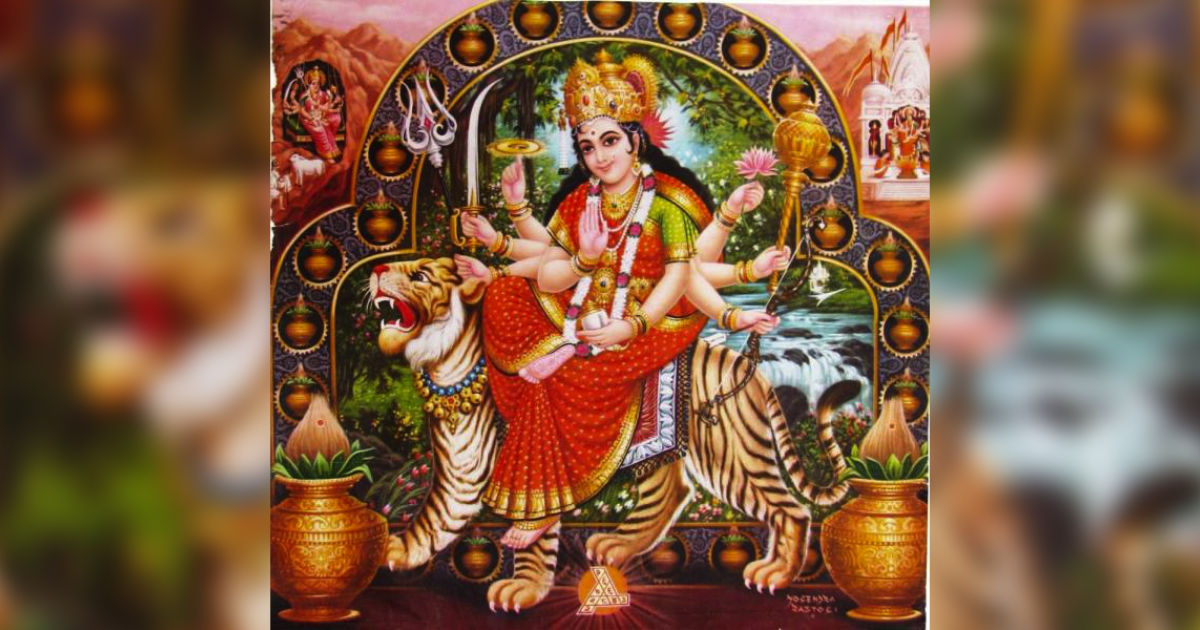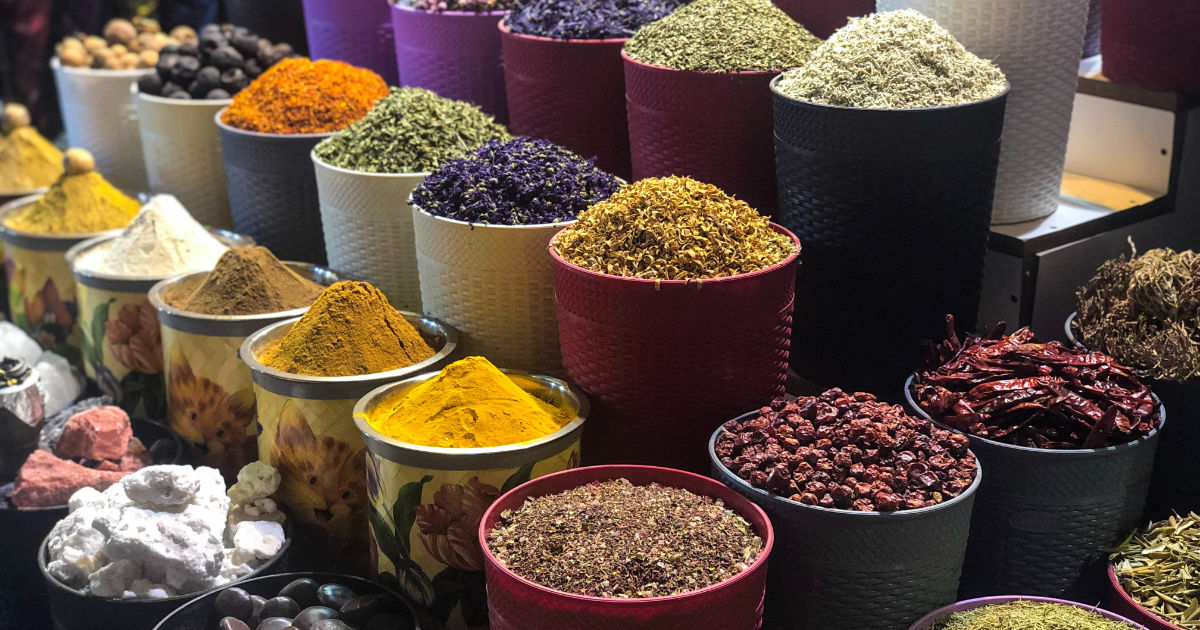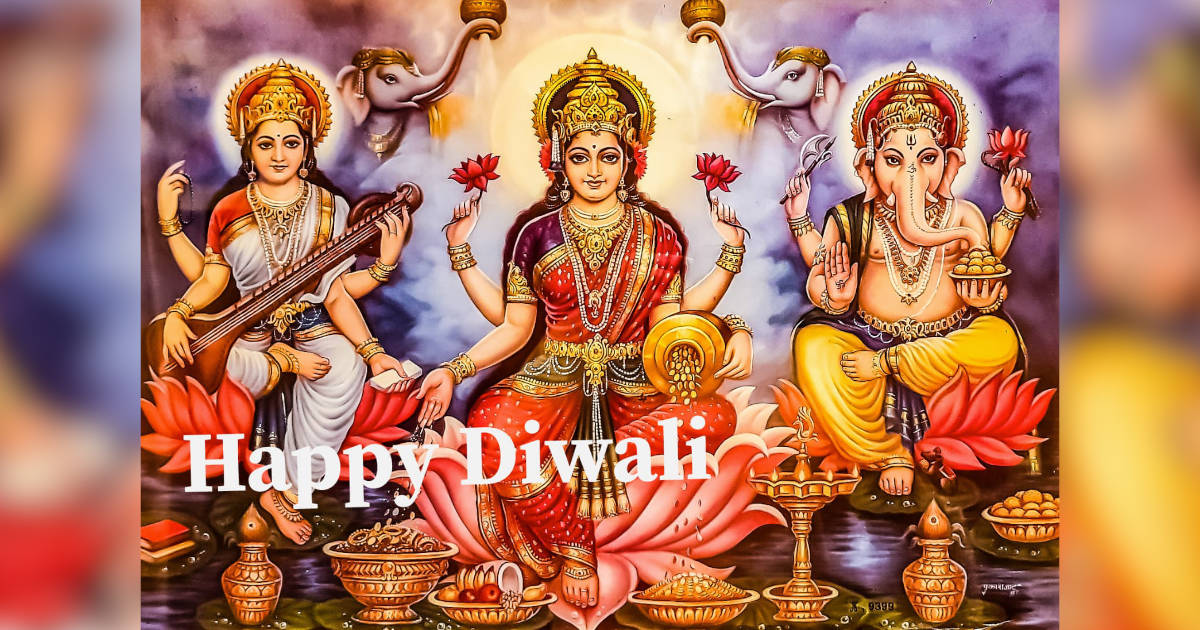Shakti is the divine energy that is connected to each God. Shiva’s Shakti is Parvati, Vishnu’s Shakti is Lakshmi and Brahma’s Shakti is Saraswati. Shakti is also addressed as Devi or Mother Goddess. Continue reading
Tag Archives: Lakshmi
326 – Lakshmi Tantra
Lakshmi Tantra is a very sacred form of practice. In it, we consider Lakshmi as the cosmic mother and her expectation from us is devotion and pursuit of truth. The Lakshmi Tantra is also dedicated to the worship of Vishnu. Continue reading
325 – Shakti Tantra
Shakti Tantra is for those seekers who wish to understand life. Shakti is pure energy. She is the primordial mother. She introduces one to Shiva (Brahman-pure consciousness), Maa Jagadamba (Maha Saraswati), Maha Lakshmi and Maha Kali. Continue reading
265 – Seven Mantras to make us complete
Chanting these seven mantras daily, can enable us to quieten and calm our mind. Continue reading
243 – Gayatri Mantra
Gayatri is the equal partner of the sun and the mantra for prana, with three forms. In the early morning, Gayatri is a little girl. At noon she is a young woman in her prime. In the evening she is a wise, old woman. The colors used for Gayatri are red in the morning, yellow at noon, and grey at night. Continue reading
233 – Devi in the hindu tradition
The Goddess has been worshipped in the vedic and tantric traditions in numerous forms. Thousands of goddesses exist in India, all manifestations and symbols of one energy and power. As Durga, she is the remover of obstacles, as Kali, the destroyer of time and annihilator of the ego. As Lakshmi, she is the granter of wisdom and knowledge. As Saraswati, she is the granter of wisdom and knowledge. As Tara, she is the guiding light. As Jagdamba, she is the mother of the universe. Continue reading
219 – Man and Woman are equal
In Kaliyuga, we tend to be abrasive and abusive about life. We condemn and criticize. We think that we are self -sufficient.
I have been contemplating on the subject of man / woman attachments. A male form is incomplete without the existence of a female form. God cannot be incomplete. Brahma, Vishnu and Shiva have female counterparts: Sarasvati and Brahma, Vishnu and Lakshmi and Shiva and Shakti. Together these three couples embody the understanding of the ultimate divine. Brahma creates, Vishnu sustains and Shiva destroys. Sarasvati, Lakshmi and Shakti embody knowledge, wealth and power. Continue reading
213 – Namaste Navratri and Summer Solestice
We all have to join together and rid the universe of evil and destruction. In the Shastras it is written that the easiest way to experience God in these troubled and turbulent times is by worship. We need not go into a complicated philosophical discussion. All we have to do is to bow our heads before the deity, who is greater than any other power of the world. Aradhana (prayer) starts from this act and progresses gradually towards bliss and love. Begin with the deity, one loves and adores (it can be the elements, chakras, and yantras), and one rises progressively above the form and merges into the supreme atman. Continue reading
190 – Hindu Gods and the significance of their vehicles
Every important Hindu God has an animal as its vahana (vehicle). They are never without them. In Sanskrit vahana means that which carries or that which pulls. These vahanas are either animals or birds and they represent the various spiritual and psychological energy that bears the Gods. The vahana may wear a saddle upon which the deities sits, or they may pull a chariot, driven by the deity. Continue reading
182 – The twin sisters
We make such a fuss about twins. A good twin and an evil twin. Then there were all those novels and films written and made about lost twins, identical twins and twins hurting each other unknowingly. I was a twin and I have twin sons. What is interesting is that they buy similar things though they live in different continents and sometimes identical events happen to them. They are fraternal twins. Continue reading
173 – Sympathetic Magic
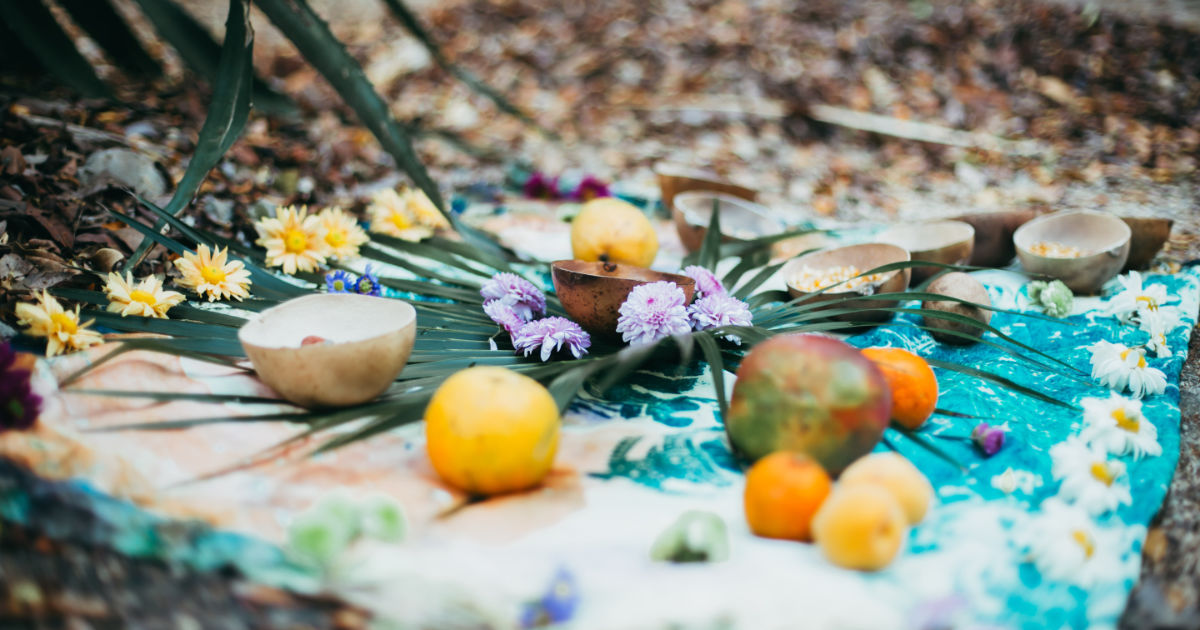 During ceremonial functions we use sacred symbols and objects as offerings and to decorate our homes. The principle underlying this custom is called sympathetic or imitative magic. It is based on the assumption that a desired result can be achieved by mimicking it. Continue reading
During ceremonial functions we use sacred symbols and objects as offerings and to decorate our homes. The principle underlying this custom is called sympathetic or imitative magic. It is based on the assumption that a desired result can be achieved by mimicking it. Continue reading
120 – The favourite food of the Gods
Ganesha’s favourite food is modak which are dumplings made from rice flour, stuffed with coconut and jaggery. The reason why it is considered so special is because it was first offered to Shiva and Parvati by the junior gods. It was said that if this special offering was consumed by anyone, he would have the power of understanding the scriptures and be master of all knowledge. Parvati being a mother wanted both her sons to have it. However they refused to share it. They were given a task and whoever completed the task, first that person would get the modak. Continue reading
071 – Diwali Blessings
Today we celebrate Diwali, the glorious festival of light and victory over evil. In many homes, annual shopping is done for new clothes, new vessels and jewelery. Lamps are lit when it is dark and crackers are burst. Continue reading
016 – Aim Hrim Klim mantra
 Aim Hrim Klim is the mantra for the Sri Yantra.
Aim Hrim Klim is the mantra for the Sri Yantra.
Aim means the source of creation.
Hrim means Lakshmi is the the supreme Sakti of Vishnu, which bestows on the adept all desired objects.
Klim means great bliss, auspiciousness and knowledge bestowed on the adept. Continue reading

